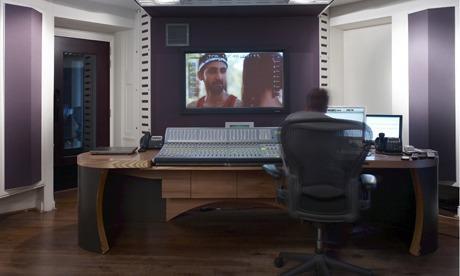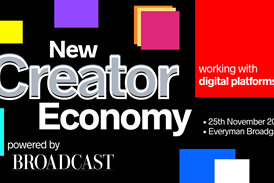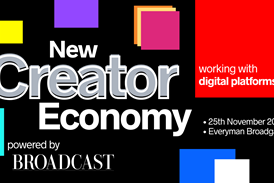Part two of our industry verdict on the likely trends of 2016 looks at the way content is post-produced and prepared for delivery.

Manipulation and workflow
Andrew Cross
Chief technology officer, NewTek
Everyone will say IP, but it will be part of the change, not the change itself. The real change is the move to general computing-based approaches, and IP is the start. The big story will be the industry’s transformation using those technologies.
Nick Pearce
Founder, Object Matrix
Managing 4K content on an SD budget requires smarter workflows. Organisations do not want several workflow or storage silos. They do however require appropriate platforms that are integrated into the way they need to work and make commercial sense. I believe 2016 will be the year of the API and a year in which customers drive more technical collaboration between their suppliers.
Russell Grute
Managing partner, Broadcast Innovation
In systems design, it’s been difficult to establish a solution or a positive return on investment for IP. The standards have evolved too slowly for the complexity of the situation on the ground. Aspen and the Alliance for IP Media Solutions (AIMS) both provide a framework to develop compatible IP technology, but they don’t cover all the bases and neither are they mutually exclusive.
Neil Anderson
Chief executive, NMR
I’m interested in the transition of traditional SDI video to IP and the various standards and new protocols being adopted. A number of the large, traditional broadcast vendors are backing SMPTE, AES and VSF standards, while a dozen others are backing Newtek’s NDI protocol, which they’re claiming is an open source protocol for use in IP and live production. I’m expecting to see new technology supporting simultaneous multi-camera recording, vision mixing, broadcast quality graphics and ultra low latency transmission, all purely IP-based.
Barry Evans
Technical director, Pixit Media
We will see significant adoption of cloud technologies, particularly within the VFX space. With many of the methodologies worked out for render-on-demand, VDI and tiered storage, the software vendors are now coming on board with sensible licensing models. By eliminating the need for large amounts of onpremise resources, even the smallest boutique facility will be able to compete with larger firms.
Rupert Watson
Director, Root6
2016 will be the year when increasing numbers of post companies keep their hot kit remotely (and less expensively) from their customer serving premises. Netflix and Amazon will be a rapidly increasing influence on the high-end post houses. Their insistence on high quality pipelines and deliverables will sort the sheep from the goats. HDR will mean that those people who have been bullshitting their way through colour science will need to improve their knowledge and skills.
Pieter Schillebeeckx
Product director, TSL Products.
2016 will be pivotal in the move to all IP workflows and companies across the industry will come together to address the customer’s “real” requirements through the creation of suitable standards. Rather than a threat to our industry we should view IP based architectures as a saviour, the cost and efficiency improvements generated represent the only way we can match the financial realities of our broadcast customers.
Peter Hampden
Owner, Lip Sync Post
High-end post facilities will be looking closely at all the implications of 4K and fine-tuning their pipelines to cope with increasing amounts of 4K content: even though not much will make it to the small screen without down conversion. Whilst technology will always march forward, we expect the current focus on talent to continue. This is refreshing, and as a facility owner for over 30 years, one of the most rewarding aspects of the job is nurturing young and enthusiastic recruits to fulfil their potential.
Symon Roue
Managing director, Visual Data
Bigger files need efficient compression technology like JPEG2000 to keep them manageable and mastering standards like IMF to simplify international distribution. Along with the associated storage, networking, connectivity and computer requirements will make it a good year for broadcast IT suppliers. It feels like it will be a good year for Dolby too with Atmos and Vision (HDR) both set for mainstream consumer publicity. I’m also curious to see if 360-degree video will become part of TV story telling.
Hugh Waters
Consultant, Waters Technical Services
Surely 2015 was the last year anyone moving SDI video around a facility will have incorporated a traditional large HD SDI routing matrix and run bucket loads of coax around the place. During 2016 we’ll see products incorporating SDI over IP technologies, like Aspen, NDI, SMPTE 2022-6, and AVB, becoming much more visible and facilities will be designed around them. Also there will be a big increase in the use of products that multiplex SDI and Ethernet onto fibre and back again. SDI will live on, but not as we have grown used to it.
Steve Sharman
Founder, Hackthorn Innovation
This is the year we finally see some aggressive moves into the cloud for broadcasters and content companies, particularly for supply chain logistics, and especially where there is little investment in in-house MAM and workflow systems.
Neil Hatton
Incoming chief executive, UK Screen
The total volume of business for facilities is likely to remain strong, buoyed by the tax reliefs, although margins will continue to be tight. Drama looks like a good genre to be in. More work will come from non-traditional sources such as OTT providers commissioning original content. The hype around HDR will be huge but, with several implementations, the question is: which one will become dominant? History shows that competing systems don’t co-exist for long. Remember VHS v Betamax or HD-DVD v BluRay. I won’t be buying an HDR telly just yet.
Niall Duffy
Head of IT and workflow solutions, Sony
There will be greater demand for commoditised software products. I think this will be split: there will be those who suffered from big installations and have built their own internal teams as a consequence – I think these organisations will increasingly realise that they have internalised the same problems that their external vendors had, in terms of dealing with complexities, timescales and the challenges of broadcast software. The rest will increase their distrust of complex software and want simpler software tools that they can try or start small before going enterprise.


























No comments yet